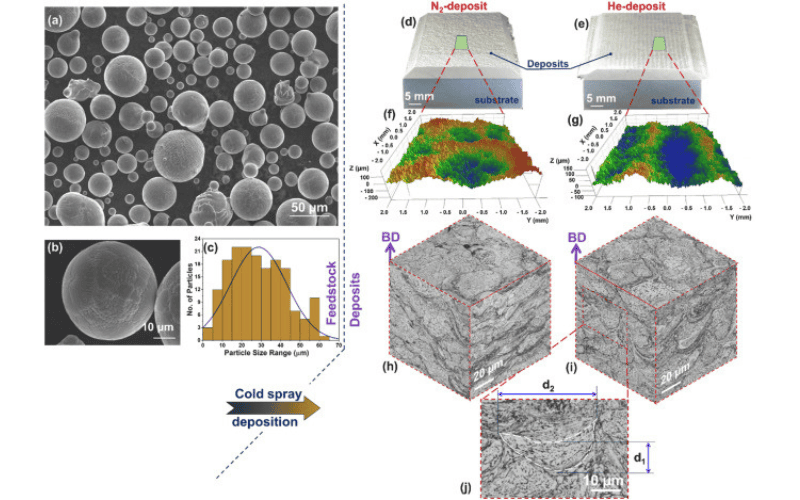April 4, 2024
Role Of Nitrogen And Helium Gases On Microstructure And Anisotropic Mechanical Properties Of Cold-Sprayed Scalmalloy Deposits
Aluminum alloys (Al) produced by fusion-based additive manufacturing techniques exhibit limited strength due to undesirable grain growth, porosity, and thermal gradient. To address these limitations, Scalmalloy (Al–Mg4.6-Sc0.72-Zr0.3 wt%) deposits of 5 mm thickness using helium and nitrogen gases were manufactured using a solid-state cold spray (CS) deposition. The microstructure of these deposits revealed a bimodal distribution of coarse and fine grains in the splat interior and jetting region, respectively, characterized by a higher degree of plastic deformation in the He-deposit. These bimodal grains resulted in a nanohardness of 1.2 GPa in the jetting region, 20% higher than that in the interior. The cumulative effect of these microstructural features resulted in a microhardness of 149 HV in the He-deposit, 1.1 times compared to that in the N2-deposit. The increased hardness is translated to a yield strength of 383 MPa and ultimate strength of 487 MPa in the He-deposit, 1.17 and 1.08 times of N2-deposit, respectively, estimated by Profilometry-based indentation plastometry (PIP). Across the hierarchical layers, profilometry-based indentation plastometry captured a consistent pile-up difference of ∼2 μm in the He-deposit and ∼3 μm in the N2-deposit on the plane perpendicular to build plane, a manifestation of in-plane anisotropy. This study advances the microstructural understanding and its relationship with observed mechanical properties, deformation behavior, and anisotropic response in high-strength Scalmalloy CS deposits.
Key words: Scalmalloy, High-strength aluminum alloy, Cold spray, CSAM, Carrier gasIndentation plastometry, Anisotropy
Originally published at Journal of Materials Research and Technology (Volume 30, May–June 2024, Pages 1341-1353)
By Anil Lama, R. Sarvesha, Denny John, Tanaji Paul, Abhijith Sukumaran, Arvind Agarwal
